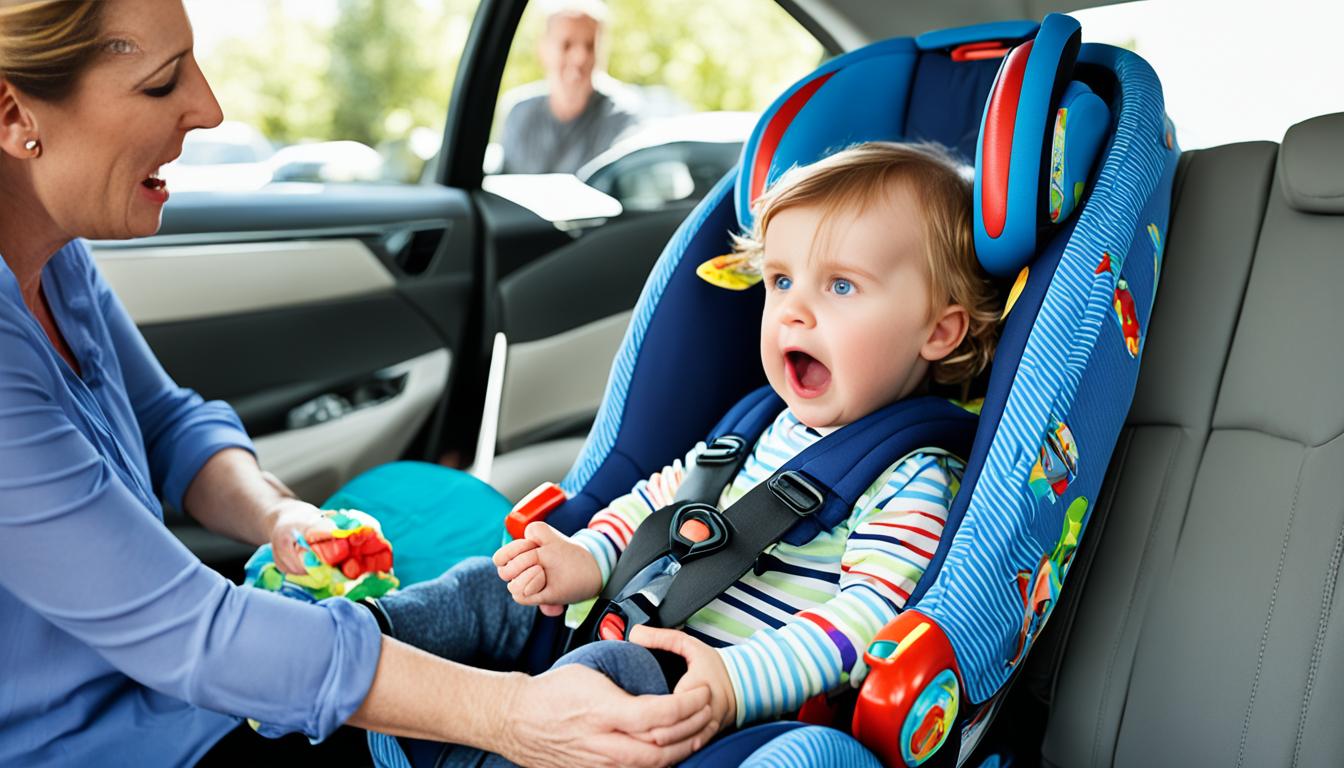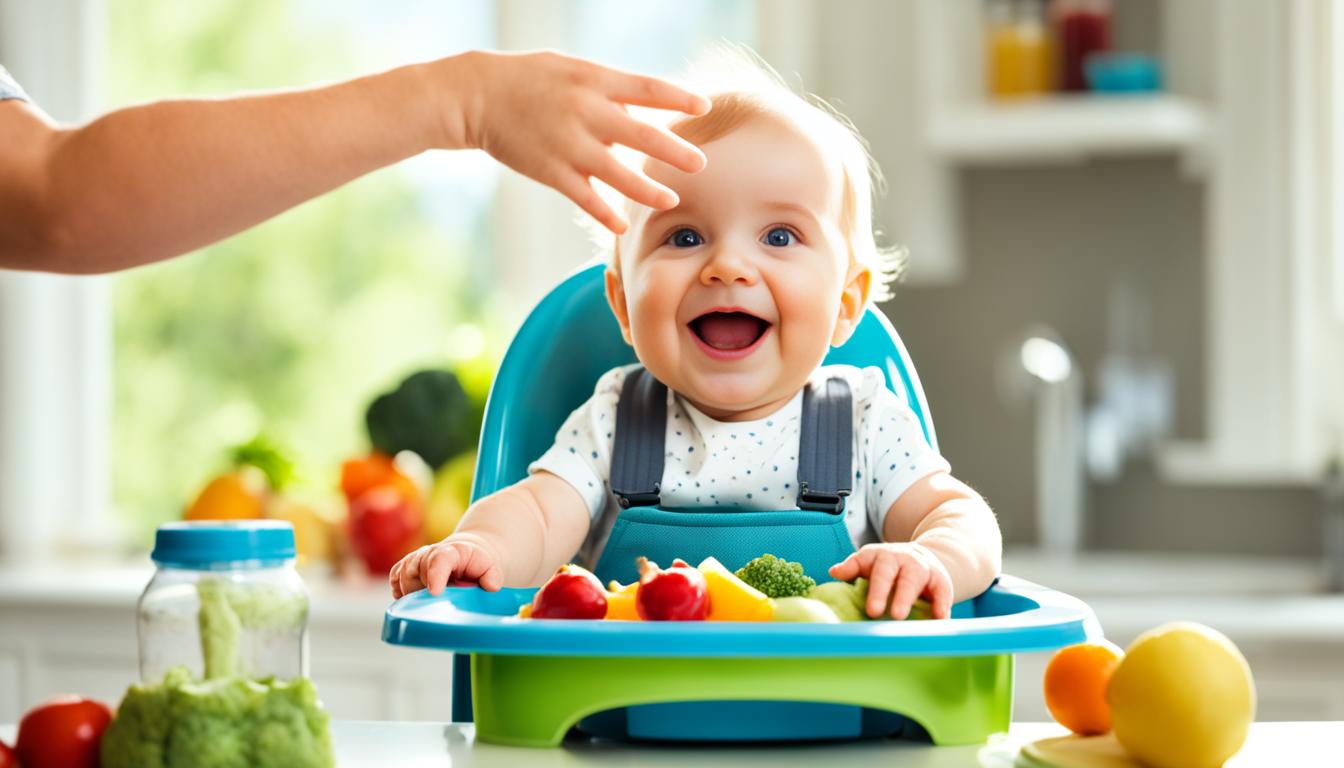Safety Guide: Are Bassinets Safe for Newborns?
When it comes to your newborn’s safety and well-being, creating a safe sleeping environment is of utmost importance. In this guide, we will explore the safety guidelines and practices to ensure that your baby sleeps soundly and reduces the risk of Sudden Infant Death Syndrome (SIDS).
According to the American Academy of Pediatrics (AAP), placing babies on their backs for sleep is highly recommended as it significantly reduces the risk of SIDS. Additionally, using a firm, flat sleep surface for your baby’s bassinet is crucial. Make sure the bassinet meets safety standards set by the Consumer Product Safety Commission (CPSC) to ensure a safe sleeping space for your little one.
Room sharing is another important aspect to consider. The AAP suggests that parents should have their baby’s crib or bassinet in their own bedroom for the first six months. This allows for easy monitoring and proximity to your baby without the risks associated with bed sharing.
Keeping the sleep area free of soft objects, loose bedding, and excessive heat is also essential for creating a safe sleep environment for newborns. These practices help reduce the risks of suffocation and overheating.
Skip To The Following Sections
Key Takeaways:
- Placing babies on their backs for sleep greatly reduces the risk of SIDS.
- Use a firm, flat sleep surface that meets CPSC safety standards.
- Avoid bed sharing with the baby and instead opt for room sharing.
- Keep the sleep area free of soft objects, loose bedding, and excessive heat.
- Follow safe sleeping practices to ensure your baby’s safety and reduce the risk of SIDS.
Choosing a Safe Bassinet: What to Look For
When it comes to providing a safe sleeping environment for your baby, choosing the right bassinet is crucial. Not all bassinets are created equal, and some may pose potential risks to your little one. To ensure your baby’s safety, here are some key factors to consider when selecting a bassinet:
Mesh Sides for Improved Airflow and Visibility
Look for a bassinet with mesh sides. This feature not only promotes better airflow, keeping your baby cool and comfortable, but it also enhances visibility. You’ll be able to keep an eye on your little one without having to constantly peek inside the bassinet.
Firm and Flat Sleep Surface
Ensure that the bassinet has a firm and flat sleep surface. This is essential for your baby’s safety and comfort. A flat surface helps prevent the risk of suffocation or any potential inabilities to breathe properly throughout sleep. It’s also important to verify that the bassinet meets the safety standards set by the Consumer Product Safety Commission (CPSC).
Avoid Bassinets with Inclines Greater Than 10 Degrees
Stay away from bassinets with inclines greater than 10 degrees. Although inclines may seem convenient or soothing for your baby, they increase the risk of positional asphyxiation. It’s crucial to prioritize your baby’s safety by opting for a bassinet with a flat sleeping surface.
Check for Recalls and Buy from Trusted Sources
Before making a purchase, check for any recalls on the bassinet model you’re considering. It’s important to stay informed about any potential safety issues. Additionally, buy from trusted sources to ensure that the bassinet meets current safety requirements and standards.
Avoid Second-Hand Bassinets
While it may be tempting to reuse a bassinet from a family member or friend, it’s best to avoid second-hand options. Safety standards change over time, and older bassinets may not meet the current safety requirements. By opting for a new bassinet, you can ensure that it provides a safe sleeping environment for your baby.
Fitted Sheet Compatibility and Avoiding Extra Bedding
Make sure the bassinet comes with a fitted sheet designed specifically for its dimensions. A snug-fitting sheet reduces the risk of your baby becoming entangled or suffocating in loose bedding. Remember, it’s crucial to never add extra bedding or soft mattresses to the bassinet, as they can increase the risk of suffocation.
By carefully considering these factors when choosing a bassinet, you can create a safe and secure sleeping environment for your precious little one.
Safe Sleeping Practices for Infants

In addition to providing a safe sleep environment with a secure bassinet, it is important to follow safe sleeping practices for infants. These practices help reduce the risk of Sudden Infant Death Syndrome (SIDS) and ensure your baby sleeps soundly and safely.
- Back to Sleep: Always place your baby on their back for sleep. This position is recommended by the American Academy of Pediatrics (AAP) and significantly reduces the risk of SIDS. Avoid letting your baby sleep on their stomach or side, as they may be more prone to suffocation.
- Use a Firm Sleep Surface: Provide your baby with a firm, flat mattress or bassinet surface. Avoid using soft or cushioned surfaces that can increase the risk of suffocation or rebreathing of exhaled carbon dioxide.
- Avoid Loose Bedding: Use a fitted sheet designed specifically for the bassinet or crib. Avoid using loose bedding, pillows, blankets, or stuffed animals in the sleep area as they can pose suffocation hazards.
- Dress Your Baby Appropriately: Dress your baby in light and breathable sleep attire. Avoid overdressing your baby to prevent overheating, which can increase the risk of SIDS.
- Maintain a Comfortable Room Temperature: Keep the room temperature between 68-72°F (20-22.2°C). Ensure the room is well-ventilated and not too hot or cold. Use a thermometer to monitor the temperature.
- Avoid Overheating: Overheating can increase the risk of SIDS. Do not overdress your baby or use too many blankets or layers. If you’re unsure if your baby is too hot or cold, feel their abdomen or back. They should feel warm but not sweaty.
- Room Sharing: The AAP recommends sharing a room with your baby for the first six months, or at least the first year. Place the bassinet or crib in your bedroom for easy monitoring and nighttime feedings.
- Breastfeeding and Pacifier Use: Breastfeeding your baby and offering a pacifier at naptime and bedtime have been shown to reduce the risk of SIDS. However, wait until breastfeeding is well-established before introducing a pacifier.
Remember, safe sleeping practices are essential for your baby’s well-being and reduce the risk of SIDS. By creating a safe sleep environment and following these guidelines, you can help ensure your little one sleeps soundly and safely. A well-rested baby is a happy baby!
| Safe Sleeping Practices for Infants | Benefits |
|---|---|
| Placing your baby on their back for sleep | Reduces the risk of SIDS |
| Using a firm sleep surface | Prevents suffocation and rebreathing of carbon dioxide |
| Avoiding loose bedding, pillows, and stuffed animals | Reduces the risk of suffocation |
| Dressing your baby in suitable sleep attire | Prevents overheating |
| Maintaining a comfortable room temperature | Ensures a conducive sleep environment |
| Avoiding overheating | Reduces the risk of SIDS |
| Room sharing with your baby | Allows for close monitoring and responsive care |
| Breastfeeding and offering a pacifier | Reduces the risk of SIDS |
When to Transition from a Bassinet to a Crib
As your baby grows and becomes more active, it is important to know when to transition from a bassinet to a crib. Bassinets provide a safe and cozy space for newborns, but their shallow design makes them unsuitable once your baby starts rolling or standing. This transition is crucial for ensuring your baby’s safety and reducing the risk of Sudden Infant Death Syndrome (SIDS).
Experts recommend moving your baby to a crib between four to six months of age, or sooner if they show signs of rolling or attempting to stand. By transitioning to a crib, you provide your baby with a more spacious and secure sleeping environment.
When making the transition, continue following safe sleeping practices for infants. Place your baby on their back to sleep, as it significantly reduces the risk of SIDS. Use a firm mattress that fits properly in the crib and ensure the sleep area is free from loose bedding and soft objects that can potentially pose suffocation hazards. By following these safe sleeping practices, you can create a nurturing sleep environment for your growing baby.
FAQ
Are bassinets safe for newborns?
Yes, bassinets can be safe for newborns when used properly. It is important to follow safety guidelines and create a safe sleeping environment.
What are the bassinet safety guidelines?
Bassinet safety guidelines include placing babies on their backs for sleep, using a firm and flat sleep surface, avoiding bed sharing, and keeping the sleep area free of soft objects and loose bedding.
What should I look for when choosing a safe bassinet?
When choosing a safe bassinet, look for one that meets safety standards, has mesh sides for improved airflow and visibility, and a firm, flat sleep surface. Avoid using bassinets with inclines greater than 10 degrees.
What are safe sleeping practices for infants?
Safe sleeping practices for infants include placing them on their backs for sleep, using a fitted sheet, avoiding loose bedding and soft objects, maintaining a comfortable room temperature, and avoiding overheating.
When should I transition my baby from a bassinet to a crib?
You should transition your baby from a bassinet to a crib as soon as they start rolling or standing. Bassinets are designed for the first four to six months of a baby’s life.




